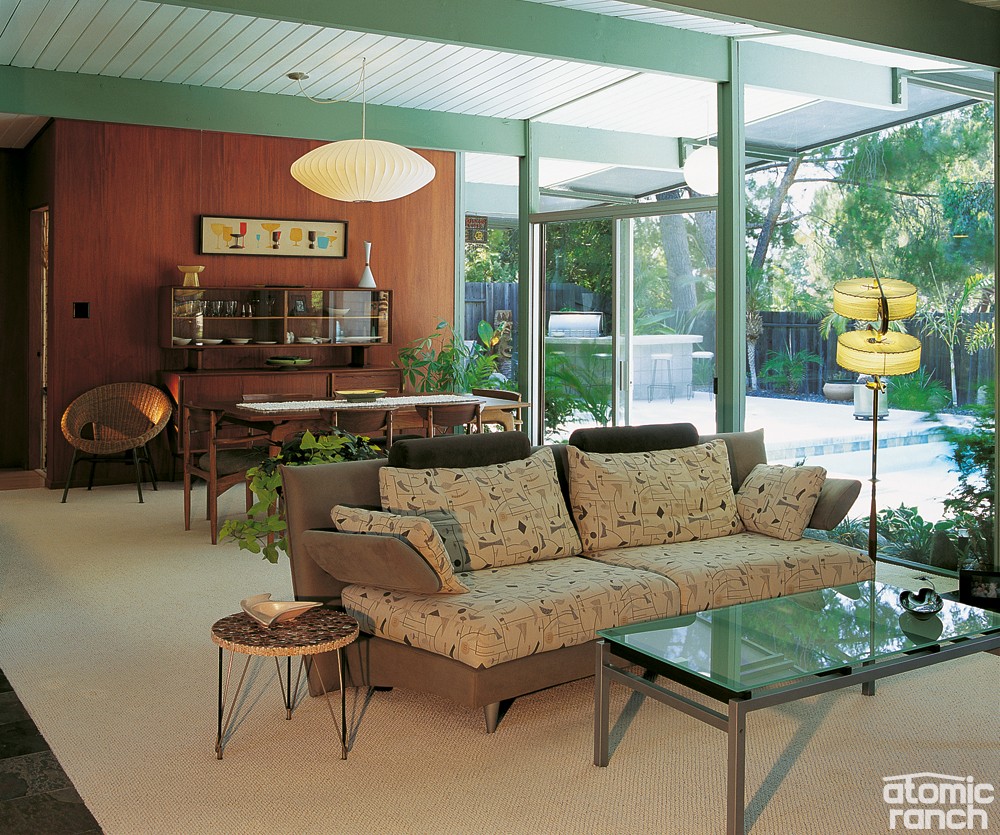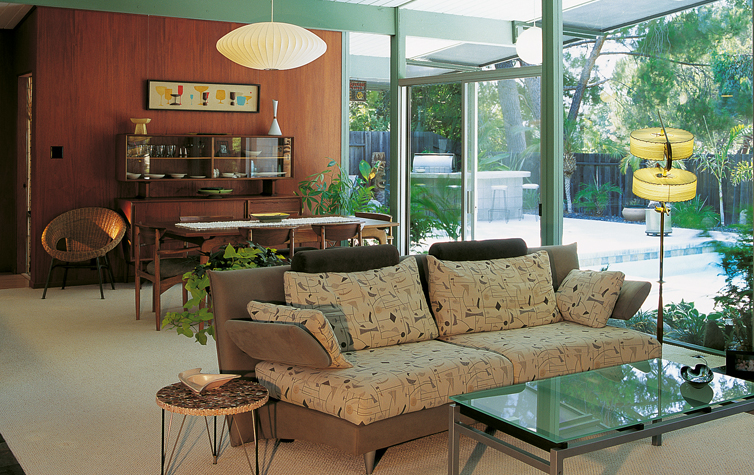
Mickee and Ron Ferrell had fallen in love with their new place, one of Thousand Oaks, CA’s Eichler homes, despite its extension problems, inside and out (part 1). They were determined to rescue the home, but first that pesky roof had to be reckoned with.
“The rep from the Arizona company that makes the foam flew out twice with data on the materials, and the Ontario, [Calif.,] roofing company came out six or seven times all told,” Ron notes about the process to convince the city to signoff on the inspections. “But foam roofs are now approved in Thousand Oaks and 10 or so jobs have been done nearby by that same company. Currently foam roofs cost between $12,000 and $16,000—about three times what we paid.”
For the Ferrells, it made sense to have no potentially leaky seams on their roof, and the insulation value the foam adds was a plus. The downside, they report, is that it telegraphs noise. “In a light rain it’s pleasant—it sounds like rain on a tin roof—but in a heavy rain it can keep you awake,” Mickee says. “In the living areas where the ceiling is higher, it’s not bad, but in the bedrooms it’s much louder.”
“In 1990 we didn’t have a computer, the Internet wasn’t really up and going, and there was no Eichler newsletter, so there wasn’t that much information on how significant the houses were,” Ron says in defense of their first efforts at renovating the house. Their priority was making the place habitable and “almost all of our money was used to get into the house,” Mickee recalls.
To work with their existing modern furniture and tight budget, the Ferrells went with laminate cabinets and Formica countertops in a new kitchen that Ron put in. They installed vinyl flooring in the den/kitchen area that ended up yellowing and was later replaced by engineered hardwood. Had they known what they do about Eichlers today, they probably would have had the original concrete stained and polished, they now say.
The original mahogany paneling was so grimy with nicotine that they were looking at a big restoration project and Ron was dubious that it could be successfully refinished, so they painted the paneling—what many would consider a bad decision for classic Eichler homes. “People would take me out and flog me now, but at the time it seemed reasonable because everything was so damaged,” he says.
At first they relished the cleanliness, but a few years later, after discovering the historical significance of Eichler homes through books and the newsletter, they decided they’d gone overboard. “When we were done, the house looked very cold and ultramodern. Everything was either white, black, gray or teal,” Ron says with a laugh when he gets to that last color. This gave them a modern, clean house, albeit one that was a trifle sterile.
“That really didn’t fit the house any better than the [previous owner’s] country style,” Mickee admits. So they changed the paint scheme, added a pool out back and replaced the painted paneling with new mahogany sheets. In the kitchen they retained some appliances from the ’90s renovation but opted for upgraded countertops and cabinets, and bought a new refrigerator and dishwasher.
The new pool led to the creation of the home’s Rincon Room, a former laundry room that they turned into a maxed-out tiki lounge. Wanting a direct path from the kitchen to the pool, the small room seemed like a good spot for a bar with wet-feet-resistant sea grass mats on the floor.
Eichler Homes with Island Style
One thing leads to another with tiki style. In part 3, see how the island decor exploded in this Eichler to create the ultimate midcentury Tiki bar.












